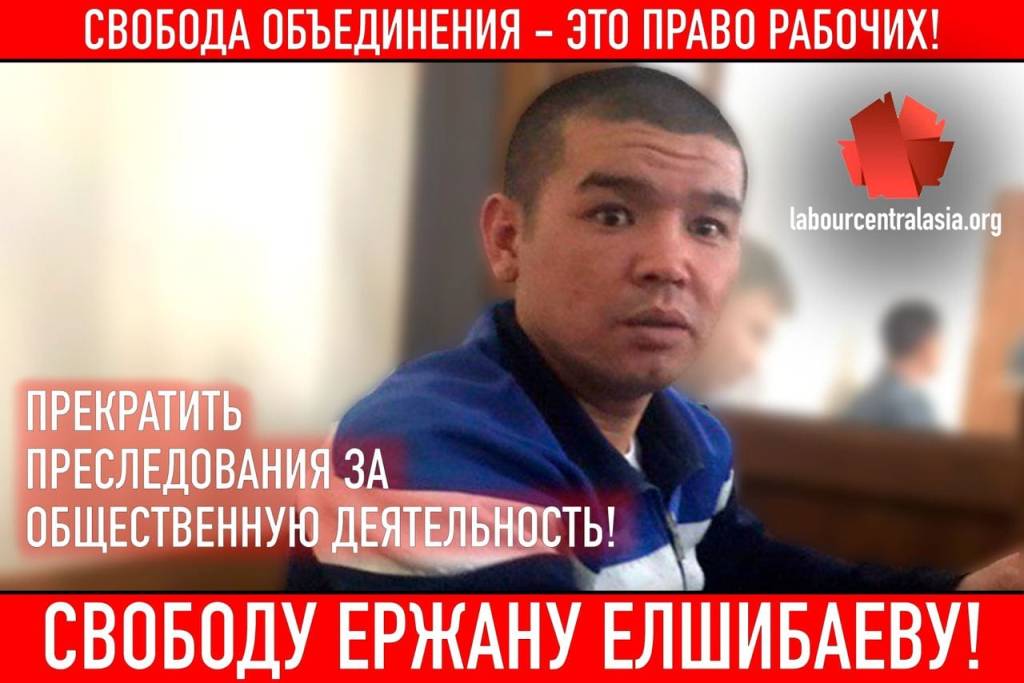Countries
Solidarity campaigns
Kazakhstan, ten years after the Zhanaozen massacre: oil workers’ fight to organise goes on
Ten years after police massacred striking oil workers at Zhanaozen, Kazakhstan, human rights organisations and trades unionists are demanding an international inquiry into the killings.
Even now, the number of victims is unknown. State officials admit that 16 were killed and 64 injured on 16 December 2011 – but campaigners say there were dozens, perhaps hundreds, more.
The initial killings, by police who fired into a peaceful, unarmed crowd, were followed by a three-day reign of terror in Zhanaozen, in the oil-rich Mangistau province in western Kazakhstan, and nearby villages.
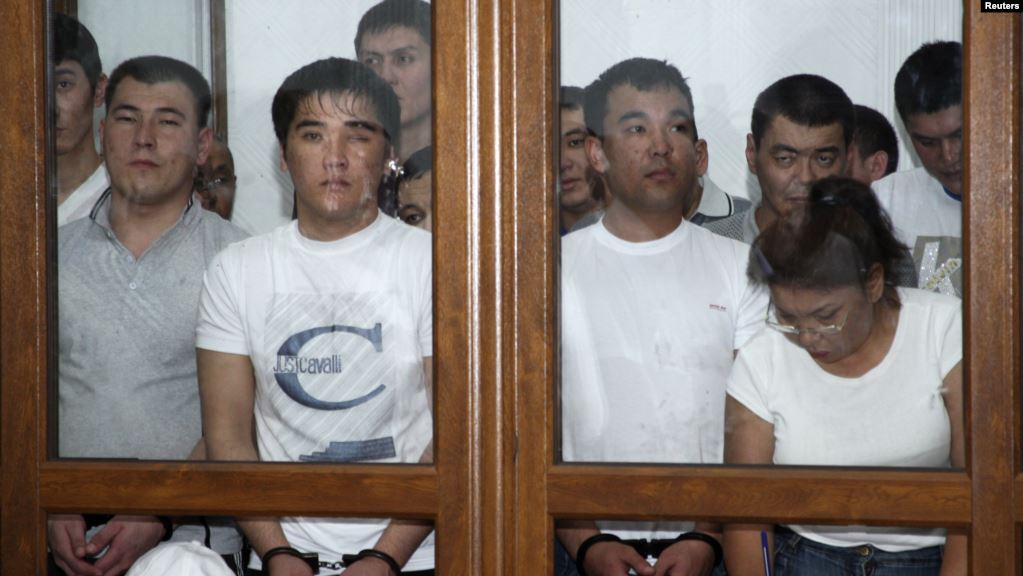
The torture and sexual violence used against detainees should also be investigated by an independent international commission, campaigners say.
Although a handful of police officers were tried for “exceeding their powers”, and a detention centre boss briefly jailed, the Kazakh government has refused to say who ordered the shootings.
The Zhanaozen shootings ended an eight-month strike by the town’s oil workers, one of the largest industrial actions ever in the post-Soviet countries.
Oil workers and their families had demanded better pay and conditions, and the right to organise independent trade unions, at Ozenmunaigaz, a production subsidiary of the national oil company Kazmunaigaz, and contracting firms.
On Saturday 11 December this year, oil workers gathered in Zhanaozen, amidst a heavy police presence, to commemorate the victims. Tomorrow, ten years to the day after the tragedy, activists plan film shows and other gatherings in Almaty, Kazakhstan’s largest city.
Zhanaozen has become a crucial strand in Kazakh working people’s collective memory. On the day of the killings, local residents risked arrest and worse to smuggle out of the locked-down city video clips showing how demonstrators were executed in cold blood. Today, some of the fear has faded, activists say: whole films – such as this one, made in 2013 (commentary in Russian) – are shared on social media.
An international investigation is needed, because, even now, the Kazakh authorities are desperate to cover up the truth, human rights activists who have pursued the truth about Zhanaozen said in interviews with People & Nature.
Evgeny Zhovtis, director of the Kazakhstan International Bureau for Human Rights and the Rule of Law, said “three questions have never been answered” about the events on Alan Square, where the initial shootings took place:
□ Who were the provocateurs who caused trouble on the square?
□ Who exactly gave the order to send in armed internal ministry forces, against an unarmed crowd?
□ Who fired the shots? The authorities have admitted to 15 killings on the square. In each case, [under Kazakh law] an investigation should show either that the officer responsible had opened fire unlawfully, or that he opened fire because his life was threatened.
Zhovtis said: “The UN commissioner for human rights, Niva Pillay, visited Kazakhstan in 2012 and called for an independent international commission to be set up, to investigate these events. Maina Kiai, the UN special rapporteur on the rights to freedom of peaceful assembly and of association, also called for such a commission. This has not happened.”
Human rights defenders in Kazakhstan reject the justice ministry’s claim that an adequate investigation had been carried out, Zhovtis said.
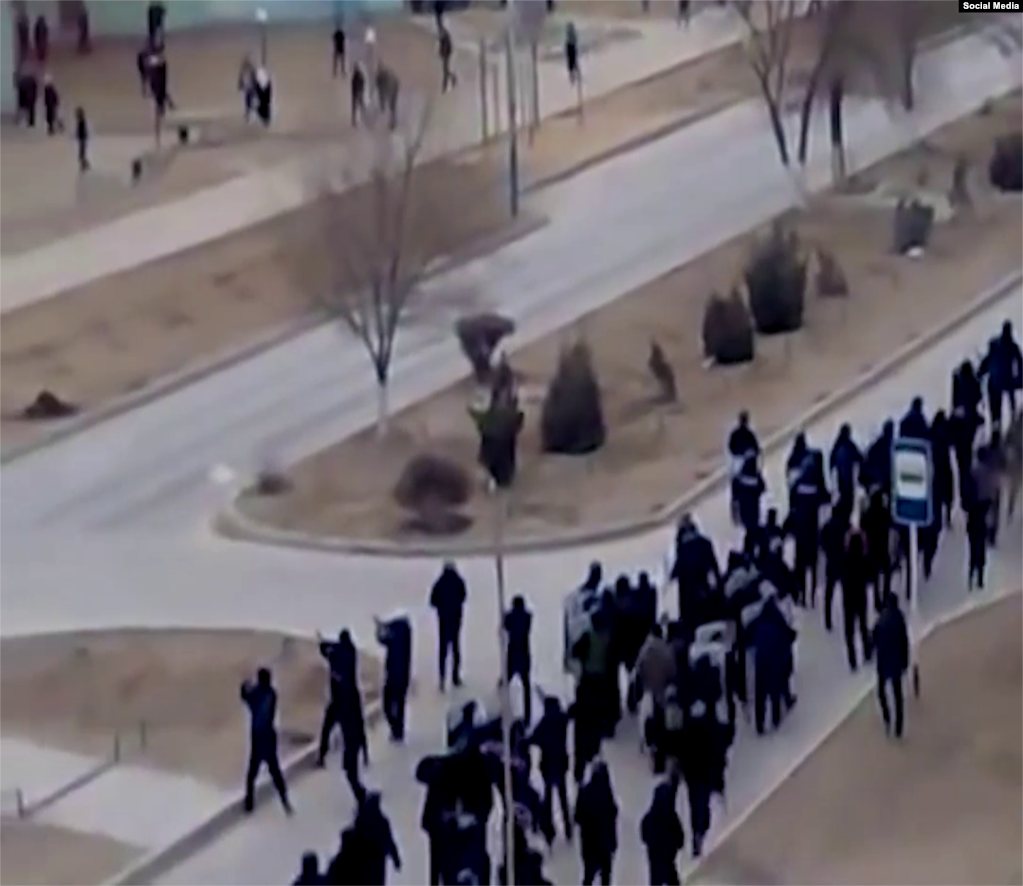
“The leading western governments are largely indifferent to what happens in central Asia. Look at their response both to the Zhanaozen tragedy and the Andijan massacre [of hundreds of protesters in Uzbekistan in May 2005].
“Nevertheless, we simply have to keep demanding justice.”
Galym Ageleuov of Liberty, the human rights organisation, who has travelled regularly to Zhanaozen since the massacre to gather evidence, said that, in addition to the events on Alan Square, any investigation should cover:
□ The use of torture against oil workers and their supporters detained during the three-day crackdown. Detailed evidence of this had already been made public, especially at a trial of 37 Zhanaozen residents in 2012.
□ Sexual violence against women detainees, including Roza Tuletaeva, an oil workers’ trade union organiser (about her release, see here and here); Zhansaule Karabalaeva, daughter of a trade union activist; Asem Kenzhebaeva, daughter of another activist (the family’s story here, her evidence of sexual violence here); and others. “There is evidence that women and men prisoners were detained naked [in winter], were beaten, and had freezing water poured on them”, Ageleuov said.
□ The total number of killings in Zhanaozen and nearby villages on 16, 17 and 18 December 2011. Of the 16 admitted by officials, 15 were killed on Alan Square with revolvers, bullets from which usually remain lodged in the body. The authorities have denied responsibility for those killed by automatic gunfire and long-distance sniper fire, including bystanders. Ageleuov said: “There are numerous cases in which bodies were only released to the families of those killed if they accepted death certificates that registered the cause of death as, for example, a heart attack.”
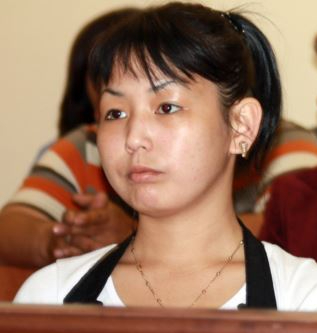
□ The killing of Torebek Tolegenov in Shetpe, and the wounding of young people who blocked a railroad to protest at the Zhanaozen massacre, needs to be investigated.
□ Multiple reports of bodies being loaded into unmarked graves – including by Yelena Kostiuchenko of Novaya Gazeta, Russia’s prime opposition newspaper, one of the first journalists to get into Zhanaozen after the massacre – have never been followed up. “Any international commission should insist on the exhumation of these bodies”, Ageleuov said.
□ A fire that broke out, inexplicably, at the Ozenmunaigaz offices on the day of the massacre.
The Kazakh labour movement will this week commemorate the Zhanaozen tragedy – at a time when the right to form independent trade unions, a key principle in the 2011 oil workers’ strike, is again at issue in many workplace struggles.
In June, the national oil company Kazmunaigaz tried to scrap an agreement on wages and conditions with the independent Oil Construction Company Workers Union, seeking instead a sweetheart deal with a “union” it had created. That followed an attempt by the authorities to deregister, and effectively put beyond the law, the independent Sectoral Union of Fuel and Energy Workers, a national-level umbrella of which the Oil Construction Company Workers Union is part.
Markhaba Khalmurzaeva, coordinator of the Central Asia Labour Rights Monitoring Mission, said: “There have been several strikes in which workers demanded the right to independent organisation, and in some cases, once the pay dispute was settled, employers even helped to register unions.”
But there is also a constant campaign of repression. “Quite often a strike will be settled, some demands are met, but activists who played a part in organising it are dismissed, and blacklisted.”
These battles for the right to independent organisation flared up earlier this year amidst a wave of strikes over pay and conditions. There were more strikes in the first half of 2021 than in the three years 2018-2020 put together. And this summer, the wave hit the western Kazakhstan oilfield, including Zhanaozen, where 11 firms were on strike simultaneously in July.
In September the Central Asia Labour Rights Monitoring Mission reported:
In Zhanaozen, in the years after the massacre, the Ozenmunaigaz oil company was reorganised into 14 separate divisions. Many of the strikers were employed in the drilling services division, where pay was raised substantially and today is at more than twice the level of ten years ago.Most of the strikes are in the rich oil region of Mangistau in western Kazakhstan, although it is not only oil workers who are walking out. The most widespread demand is for wage increases. Some groups of workers demand a 13th wage [i.e. to be paid an extra month’s money each year]; partial or complete funding of sanatorium breaks for those working with toxic chemicals; compensation for Covid-19 tests; and … [a supply of] milk [at work].
In an attempt to smother the social discontent that exploded in 2011, the government invested in the town’s infrastructure, providing among other things round-the-clock water supply, where previously water only reached people’s homes for short periods twice a day.
Zhanaozen’s population has also expanded … but not everyone benefits. Unemployment has grown rapidly, and in 2019 young people began to demonstrate at the local authorities’ offices, demanding work at Ozenmunaigaz.
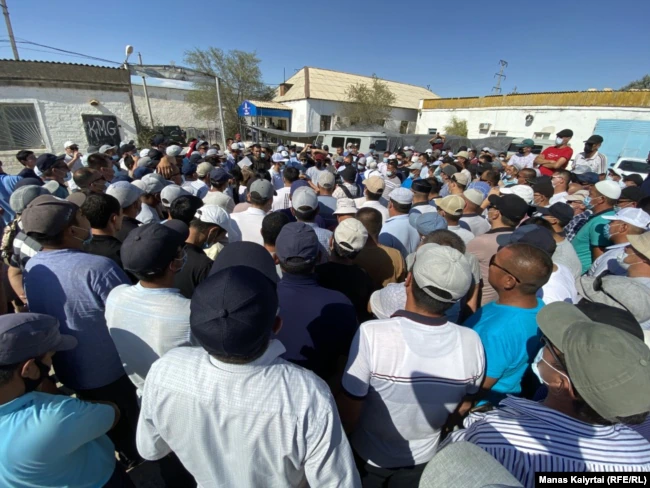
Erzhan Elshibayev, who helped to organise these peaceful gatherings, was arrested and jailed for five years. Galym Ageleuov said: “Elshibayev is a victim of political repression. In 2019, he was charged with an offence arising from a fight he was involved in, when he was attacked by four men in 2017 while on his way to work – an incident that gave rise to no charges at the time.
“Elshibayev has been in detention for two years. For the last three months he has been in solitary confinement and no-one has heard from him.” Trade unionists gathered at Bishkek last week at a conference called on the Kazakh authorities to release him immediately.
Ten years after the massacre, labour’s battles against capital continue in the oilfield – for better pay and living conditions, for the right to organise independently at work, for ways to live decently. Exposing the truth about the state repression in 2011, about the chain of command, about the barbaric use of murder and torture in the service of capital, is a part of this wider struggle. SP, 15 December 2021.
■ Zhanaozen: worker organisation and repression, by Simon Pirani (Gabriel Levy)
■ Zhanaozen: some lessons by Evgeny Zhovtis
■ They shot to kill. Interview with Galym Ageleuov
■ Kazakh oil workers: index of articles
